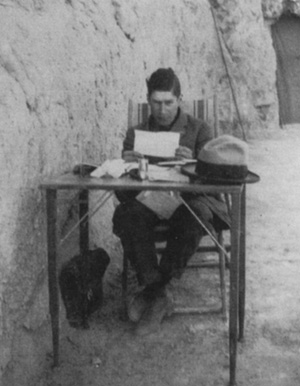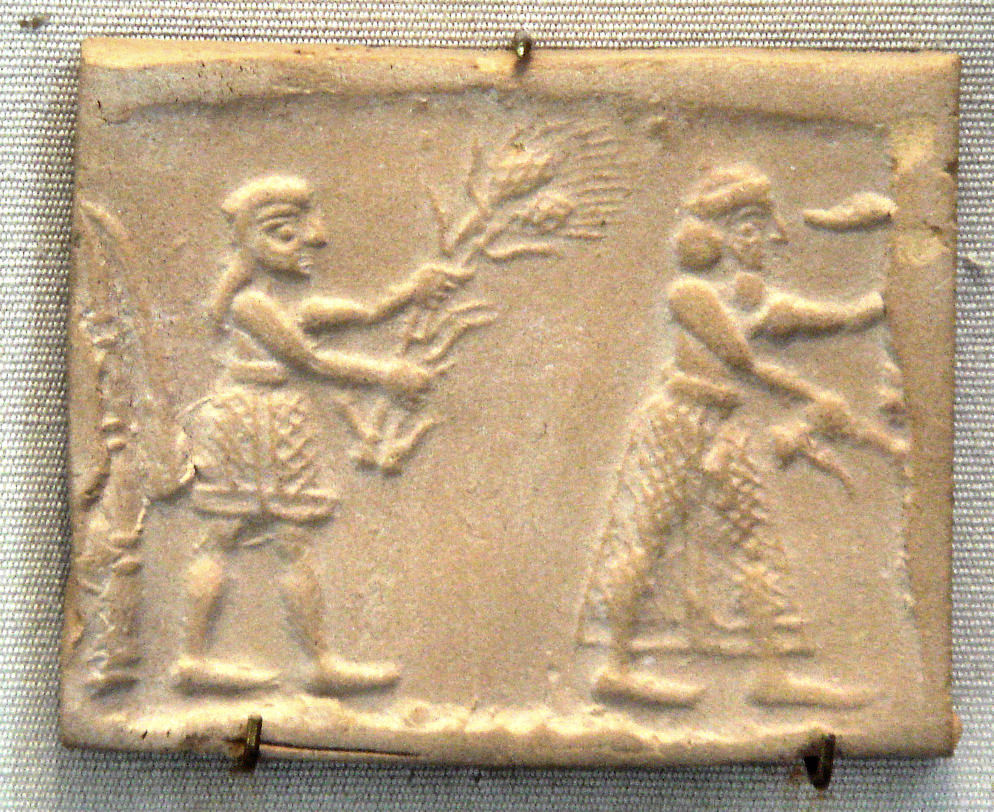|
Tizqar
Tizqar of Kish was the nineteenth Sumerian king in the First Dynasty of Kish and succeeded his father Zamuq as a ruler, according to some versions of the '' Sumerian King List''.Thorkild Jacobsen Thorkild Peter Rudolph Jacobsen (; 7 June 1904 – 2 May 1993) was a renowned Danish historian specializing in Assyriology and Sumerian literature. He was one of the foremost scholars on the ancient Near East. Biography Thorkild Peter Rudolph Ja ..., ''The Sumerian King List'' (Chicago: University of Chicago Press, 1939), pp. 82f His name does not appear in Early Dynastic inscriptions, meaning that he is unlikely to have been a real historical person. References , - 29th-century BC Sumerian kings Kings of Kish Sumerian rulers {{AncientNearEast-bio-stub ... [...More Info...] [...Related Items...] OR: [Wikipedia] [Google] [Baidu] |
Sumerian King List
The ''Sumerian King List'' (abbreviated ''SKL'') or ''Chronicle of the One Monarchy'' is an ancient literary composition written in Sumerian that was likely created and redacted to legitimize the claims to power of various city-states and kingdoms in southern Mesopotamia during the late third and early second millennium BC. It does so by repetitively listing Sumerian cities, the kings that ruled there, and the lengths of their reigns. Especially in the early part of the list, these reigns often span thousands of years. In the oldest known version, dated to the Ur III period (c. 2112–2004 BC) but probably based on Akkadian source material, the ''SKL'' reflected a more linear transition of power from Kish, the first city to receive kingship, to Akkad. In later versions from the Old Babylonian period, the list consisted of a large number of cities between which kingship was transferred, reflecting a more cyclical view of how kingship came to a city, only to be inevitably replace ... [...More Info...] [...Related Items...] OR: [Wikipedia] [Google] [Baidu] |
Zamug
Zamug of Kish was the eighteenth Sumerian king in the First Dynasty of Kish, according to the '' Sumerian king list''. His father was Barsal-nuna, whom he succeeded as ruler.Thorkild Jacobsen Thorkild Peter Rudolph Jacobsen (; 7 June 1904 – 2 May 1993) was a renowned Danish historian specializing in Assyriology and Sumerian literature. He was one of the foremost scholars on the ancient Near East. Biography Thorkild Peter Rudolph Ja ..., ''The Sumerian King List'' (Chicago: University of Chicago Press, 1939), pp. 82f His name does not appear in other documents than the ''SKL'', meaning that it is unlikely that he was a historical person. References , - 29th-century BC Sumerian kings Kings of Kish Sumerian rulers {{AncientNearEast-bio-stub ... [...More Info...] [...Related Items...] OR: [Wikipedia] [Google] [Baidu] |
Ilku
Ilku of Kish was the twentieth Sumerian king in the First Dynasty of Kish, according to the ''Sumerian King List''.Thorkild Jacobsen Thorkild Peter Rudolph Jacobsen (; 7 June 1904 – 2 May 1993) was a renowned Danish historian specializing in Assyriology and Sumerian literature. He was one of the foremost scholars on the ancient Near East. Biography Thorkild Peter Rudolph Ja ..., ''The Sumerian King List'' (Chicago: University of Chicago Press, 1939), pp. 82f His name does not appear in Early Dynastic inscriptions, meaning that he is unlikely to have been a real historical person. References , - 29th-century BC Sumerian kings Kings of Kish Year of birth unknown Year of death unknown Sumerian rulers {{AncientNearEast-bio-stub ... [...More Info...] [...Related Items...] OR: [Wikipedia] [Google] [Baidu] |
Kish (Sumer)
Kish ( Sumerian: Kiš; transliteration: Kiš ki; cuneiform: ; Akkadian: kiššatu, near modern Tell al-Uhaymir) is an important archaeological site in Babil Governorate (Iraq), located 80 kilometers south of Baghdad and 12 kilometers east of the ancient city of Babylon. The Ubaid period site of Ras al-Amiyah is 8 kilometers away. It was occupied from the Ubaid to Hellenistic periods. In Early Dynastic times the city's patron deity was Inanna with her consort Enki. Her temple, at Tell Ingharra, was (E)-hursag-kalama. By Old Babylonian times the patron deity had become Zababa, along with his consort, the goddess Bau. His temple Emeteursag (later Ekišiba) was at Uhaimir. History Kish was occupied from the Ubaid period (c.5300-4300 BC), gaining prominence as one of the pre-eminent powers in the region during the Early Dynastic Period when it reached its maximum extent of 230 hectares. [...More Info...] [...Related Items...] OR: [Wikipedia] [Google] [Baidu] |
Sumer
Sumer () is the earliest known civilization in the historical region of southern Mesopotamia (south-central Iraq), emerging during the Chalcolithic and early Bronze Ages between the sixth and fifth millennium BC. It is one of the cradles of civilization in the world, along with ancient Egypt, Elam, the Caral-Supe civilization, Mesoamerica, the Indus Valley civilisation, and ancient China. Living along the valleys of the Tigris and Euphrates rivers, Sumerian farmers grew an abundance of grain and other crops, the surplus from which enabled them to form urban settlements. Proto-writing dates back before 3000 BC. The earliest texts come from the cities of Uruk and Jemdet Nasr, and date to between c. 3500 and c. 3000 BC. Name The term "Sumer" ( Sumerian: or , Akkadian: ) is the name given to the language spoken by the "Sumerians", the ancient non- Semitic-speaking inhabitants of southern Mesopotamia, by their successors the East Semitic-speaking Akkadians. The Sumerians ... [...More Info...] [...Related Items...] OR: [Wikipedia] [Google] [Baidu] |
Thorkild Jacobsen
Thorkild Peter Rudolph Jacobsen (; 7 June 1904 – 2 May 1993) was a renowned Danish historian specializing in Assyriology and Sumerian literature. He was one of the foremost scholars on the ancient Near East. Biography Thorkild Peter Rudolph Jacobsen received, in 1927, an M.A. from the University of Copenhagen and then came to the United States to study at the Oriental Institute of the University of Chicago, where, in 1929, he received his Ph.D. He was a field Assyriologist for the Iraq Expedition of the Oriental Institute from 1929 to 1937) and in 1946 became director of the Oriental Institute. He served as Dean of the Humanities Division from 1948 to 1951, as an editor of the ''Assyrian Dictionary'' from 1955 to 1959, and as Professor of Social Institutions from 1946–1962. In 1962, Jacobsen became a professor of Assyriology at Harvard University, where he remained until his retirement in 1974. Beyond being an expert translator, he was a brilliant interpreter whose insights ... [...More Info...] [...Related Items...] OR: [Wikipedia] [Google] [Baidu] |
Early Dynastic Period (Mesopotamia)
The Early Dynastic period (abbreviated ED period or ED) is an archaeological culture in Mesopotamia (modern-day Iraq) that is generally dated to c. 2900–2350 BC and was preceded by the Uruk and Jemdet Nasr periods. It saw the development of writing and the formation of the first cities and states. The ED itself was characterized by the existence of multiple city-states: small states with a relatively simple structure that developed and solidified over time. This development ultimately led to the unification of much of Mesopotamia under the rule of Sargon, the first monarch of the Akkadian Empire. Despite this political fragmentation, the ED city-states shared a relatively homogeneous material culture. Sumerian cities such as Uruk, Ur, Lagash, Umma, and Nippur located in Lower Mesopotamia were very powerful and influential. To the north and west stretched states centered on cities such as Kish, Mari, Nagar, and Ebla. The study of Central and Lower Mesopotamia has long b ... [...More Info...] [...Related Items...] OR: [Wikipedia] [Google] [Baidu] |
King Of Sumer
Lugal ( Sumerian: ) is the Sumerian term for "king, ruler". Literally, the term means "big man." In Sumerian, ''lu'' "𒇽" is "man" and ''gal'' "𒃲" is "great," or "big." It was one of several Sumerian titles that a ruler of a city-state could bear (alongside '' en'' and '' ensi'', the exact difference being a subject of debate). The sign eventually became the predominant logograph for "King" in general. In the Sumerian language, ''lugal'' is used to mean an owner (e.g. of a boat or a field) or a head (of a unit such as a family). As a cuneiform logograph (Sumerogram) LUGAL (Unicode: 𒈗, rendered in Neo Assyrian). Cuneiform The cuneiform sign LUGAL 𒈗 (Borger nr. 151, Unicode U+12217) serves as a determinative in cuneiform texts ( Sumerian, Akkadian and Hittite), indicating that the following word is the name of a king. In Akkadian orthography, it may also be a syllabogram ''šàr'', acrophonically based on the Akkadian for "king", ''šarrum''. Unicode also includes th ... [...More Info...] [...Related Items...] OR: [Wikipedia] [Google] [Baidu] |
Ensí
Ensi (cuneiform: , "lord of the plowland"; Emesal dialect: ''umunsik''; akk, iššakkum, script=Latn, italic=yes) was a Sumerian title designating the ruler or prince of a city-state. Originally it may have designated an independent ruler, but in later periods the title presupposed subordinance to a lugal. For the Early Dynastic Period (about 2800–2350 BC), the meaning of the titles en, ensi and lugal cannot be differentiated clearly: see lugal, ensi and en for details. Ensi may have originally been a designation of the ruler restricted to Lagash and Umma. The ''ensi'' was considered a representative of the city-state's patron deity. In later periods, an ensi was normally seen as subordinate to a lugal. Nevertheless, even the powerful rulers of the Second Dynasty of Lagash (c. 2100 BC) such as Gudea were satisfied with the title ensi. During the Third Dynasty of Ur (about 2100–2000 BC) ensi referred to the provincial governors of the kingdom. These exercised great pow ... [...More Info...] [...Related Items...] OR: [Wikipedia] [Google] [Baidu] |
29th-century BC Sumerian Kings
The 9th century was a period from 801 ( DCCCI) through 900 ( CM) in accordance with the Julian calendar. The Carolingian Renaissance and the Viking raids occurred within this period. In the Middle East, the House of Wisdom was founded in Abbasid Baghdad, attracting many scholars to the city. The field of algebra was founded by the Muslim polymath al-Khwarizmi. The most famous Islamic Scholar Ahmad ibn Hanbal was tortured and imprisoned by Abbasid official Ahmad ibn Abi Du'ad during the reign of Abbasid caliph al-Mu'tasim and caliph al-Wathiq. In Southeast Asia, the height of the Mataram Kingdom happened in this century, while Burma would see the establishment of the major kingdom of Pagan. Tang China started the century with the effective rule under Emperor Xianzong and ended the century with the Huang Chao rebellions. While the Maya experienced widespread political collapse in the central Maya region, resulting in internecine warfare, the abandonment of cities, and a north ... [...More Info...] [...Related Items...] OR: [Wikipedia] [Google] [Baidu] |
Kings Of Kish
Kings or King's may refer to: *Monarchs: The sovereign heads of states and/or nations, with the male being kings *One of several works known as the "Book of Kings": **The Books of Kings part of the Bible, divided into two parts **The ''Shahnameh'', an 11th-century epic Persian poem **The Morgan Bible, a French medieval picture Bible **The Pararaton, a 16th-century Javanese history of southeast Asia *The plural of any king Business * Kings Family Restaurants, a chain of restaurants in Pennsylvania and Ohio * Kings Food Markets, a chain supermarket in northern New Jersey * King's Favourites, a brand of cigarettes *King's Variety Store, a chain of stores in the USA * King's (defunct discount store), a defunct chain of discount stores in the USA Education *King's College (other), various colleges * King's School (other), various schools * The King's Academy (other), various academies Electoral districts * King's (New Brunswick electoral district) (1867 ... [...More Info...] [...Related Items...] OR: [Wikipedia] [Google] [Baidu] |
.jpg)



